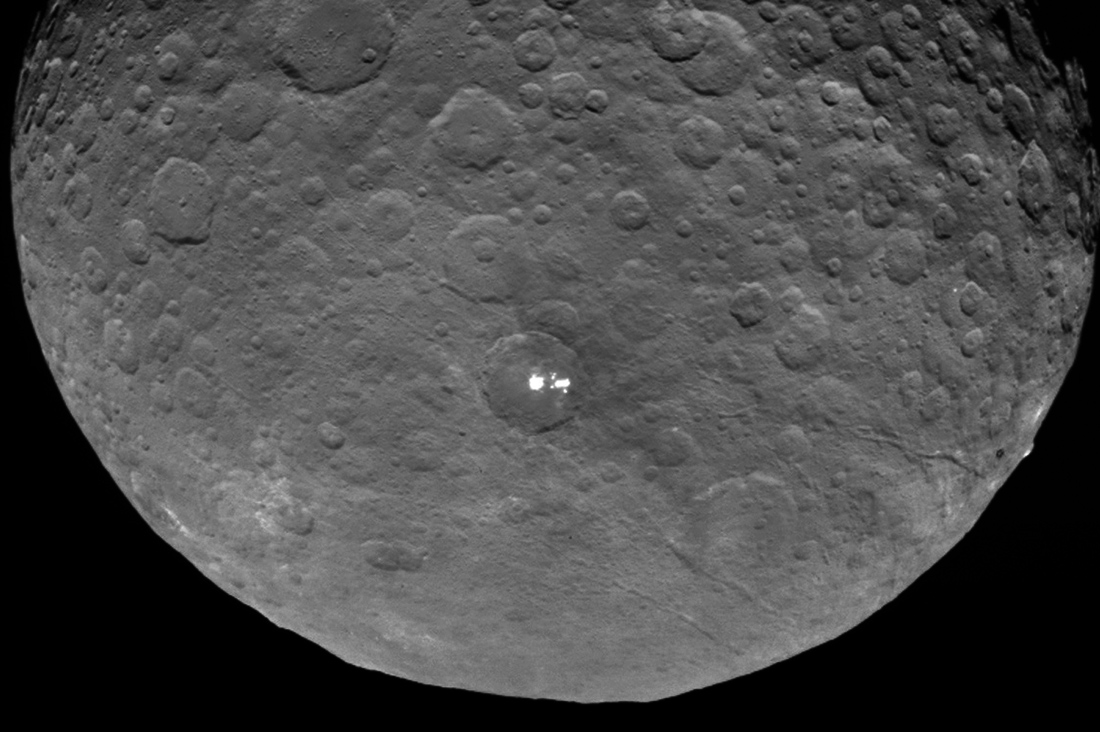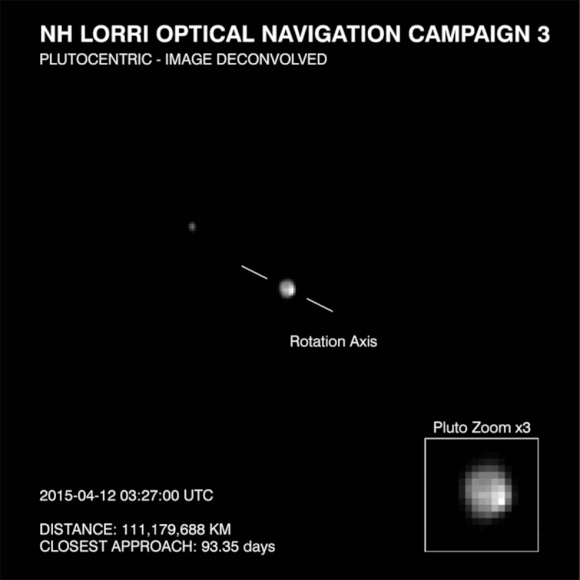Ice and volcanoes of Ceres

NASA's Dawn (Dawn) space probe is approaching the dwarf planet Ceres. Each time, the images of this mysterious cosmic body, rotating between the orbits of Mars and Jupiter, open up new details.
Under katom gif on 10 Mb.
The mysteries of Ceres began even before Dawn arrived at her. A year and a half earlier, the ESA Herschel infrared space telescope was able to determine two points on the surface of a dwarf planet from where water evaporates . Evaporation was about 6 kg per second, that is, not as large as, for example, the geysers of Enceladus.

Back in February 2015, the first pictures with more or less decent detail showed unusual objects on the surface of a dwarf planet. One point roughly corresponded to Region A:

It is not yet known what these bright objects are. NASA even arranged a vote . Although, it is most likely that it is water ice. The ice on Ceres itself is not surprising. It is believed that all of its outer crust consists of frozen water. At the same time, Ceres is located almost on the border of the so-called The " snow line " that separates the inside of the solar system from the outside. The difference is in the interaction of frozen water and sunlight. Inside - The sun evaporates ice. Outside the snow line - the light is not of sufficient intensity and simply reflects. Therefore, in the orbit of Jupiter, the existence of ice moons like Europe is possible, but in the orbit of Mars - not.
Ceres is located at the border, but still inside, and the ice should have evaporated. Fortunately for the dwarf planet, it is covered by debris that has covered it with billions of years spent in the asteroid belt. Therefore, the surface of Ceres is not very different in color from the Moon or Mercury.
NASA released a new Ceres rotation animation yesterday. On it, you can take a closer look at the bright spots in the crater.
Expand gif animation (8 mb)

The image resolution is 1.3 km per pixel, that is, the brightest spot will be about 6 km across, and the smallest - less than a kilometer.

The simplest explanation that can be given to the phenomenon is the result of the relatively recent fall of a large meteorite or small asteroid on Ceres. When falling, the asteroid could be fragmented due to the gravitational impact of Ceres and fall out with several fragments of different sizes.
A more exotic and intriguing version is the cryovolcano. For example, several cryovolcanoes were identified on Titan - these are volcanoes where viscous ice flows instead of lava, and steam instead of volcanic gases. But, that Titan, that of Enceladus, has a reason for heating the bowels - the gravitational impact of Saturn. Ceres has no such reason, therefore the volcanic hypothesis is more interesting, because implies an unknown source of energy. Bright spots on Ceres have not yet been resolved, but volcanism, even the past, can be said more confidently. The same Dawn survey has already allowed us to see another object on the body of a dwarf planet, which is very similar to a volcano:

The age of this proposed volcano can be determined by estimating the number of small craters in the frozen lava. It remains only to wait for close shots. It seems that this will not be the only interesting find.
Meanwhile, we are preparing for new discoveries and riddles of another dwarf planet - Pluto. It already seems to have examined polar glaciers.

Two months are left to fly to Pluto, gain patience, stock up on popcorn.
